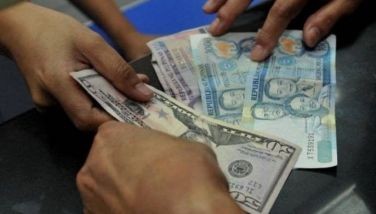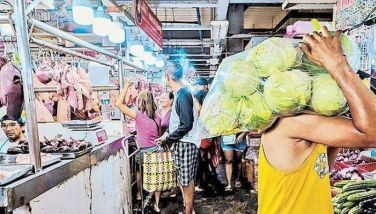No rice imports outside MAV next year – DA
MANILA, Philippines - The Department of Agriculture maintain that no rice importation would be made next year outside its international trade commitments.
Under its commitment with the World Trade Organization (WTO), the Philippines allows the entry of 350,000 metric tons (MT) of rice under the minimum access volume (MAV) at 40-percent duty while imports outside MAV are levied a 50- percent duty.
“Definitely there will be no more importation to be made outside of the MAV next year,†Agriculture Undersecretary for field operations Dante Delima told reporters.
For this year, the Philippines has an allocation of 163,000 MT for the MAV-country-specific quota (CSQ) comprising 98,000 MT for Thailand, 25,000 MT for China, 25,000 MT for India, and 15,000 MT for Australia.
The Philippines also imported 187,000 metric tons of its buffer stock requirements from Vietnam under a government-to-government tender with its state-run Southern Food Corp.
Delima, who is also the National Rice Program coordinator, said that for this year, only 205,000 MT had been imported under the MAV.
The underutilization of the importation window is attributed to the steep in-quota duty.
The Philippines is currently seeking the support of its trading partners for the extension of its special restriction on rice imports until 2017 to prepare the local rice industry for the intense competition when the economic integration within the ASEAN region takes effect in 2015.
Delima earlier explained that this year’s palay production goal sufficiently covers the food requirement.
The computations are based on a per capital consumption of 114.26 kilograms and a population of 97. 13 million.
Rice production this year is expected to reach 12.06 million MT from more than 20 million metric tons of palay. To be added to this is the beginning inventory for the year of 2.5 million MT, a carry-over volume from 2012.
Production also includes imports of 213, 100 MT and rice confiscated by Customs with a volume of 30,700 MT.
The total available supply for the year is hence placed at 14.84 million MT, of which 11.10 million MT would be used for food and 1.5 million for seed requirements and other uses.
Around 170 MT is expected to be exported for the year.
The total projected utilization is thus placed at 12.60 million MT, resulting to an ending inventory of 2.24 million MT which would last for 74 days.
The country has also begun an exportation program for premium rice varieties to reintroduce Philippine rice to the international market.
Various companies and farmers cooperatives this year exported more than 100 MT of premium rice to the US, Middle East and Hong Kong among others.
Delima said the government would like to see the exportation of at least 200 MT this year, after which it would assess the economic viability of increasing the volume.
“By yearend, we will reassess the economic benefits of our export initiative to our traders and to our farmers. We will assess if this has created a significant impact to their welfare,†he said.
Producing premium rice varieties such as long grain aromatic varieties, heirloom and colored rice can be labor –intensive because of the strict export requirements.
This, however, can create more jobs in the rural areas.
Delima said farms producing rice for exports need to improve milling facilities to maintain the quality of produce.
He said the DA rice program is open to providing equipment for these production zones if the investment is seen to have good returns.
“The rice program can help with it if the investment is worthy,†he said.
- Latest
- Trending































